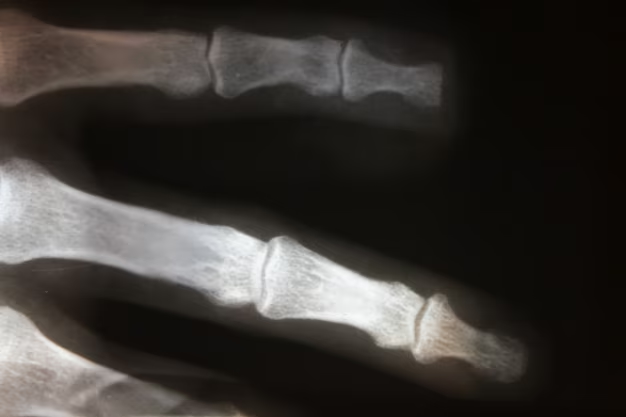Unveiling the Mystery: Can Arthritis Be Seen on X-Rays?
Arthritis is a common concern for many individuals as they age or encounter joint pain. One of the pressing questions is whether arthritis can be detected using X-rays. While known for their role in identifying fractures and bone abnormalities, X-rays can also provide valuable insights into joint health. This article delves into the nuances of identifying arthritis through X-rays, exploring its capability, limitations, and what patients can expect during the diagnostic process.
Understanding Arthritis: A Brief Overview
What Is Arthritis?
Arthritis is an umbrella term referring to a wide array of conditions characterized by joint inflammation. It affects millions and is a significant cause of disability, influencing daily activities and overall quality of life. The two most prevalent forms of arthritis are:
- Osteoarthritis (OA): Often termed as "wear and tear" arthritis, OA involves the degradation of joint cartilage and underlying bone, typically found in the knees, hips, and hands.
- Rheumatoid Arthritis (RA): An autoimmune condition where the body's immune system attacks joint tissues, leading to inflammation, pain, and potentially joint deformity.
Understanding these forms is crucial as they can affect how arthritis appears on X-rays.
The Diagnostic Role of X-Rays
X-rays use electromagnetic radiation to produce images of the inside of the body. In the context of arthritis, X-rays primarily focus on revealing changes in joint structure and signs of wear, such as bone spurs or narrowing of joint spaces. However, the effectiveness and details seen can vary depending on the arthritis type.
How Arthritis Manifests on X-Rays
Identifying Osteoarthritis on X-Rays
In cases of osteoarthritis, X-rays are particularly valuable. They can show:
- Joint Space Narrowing: This is due to the cartilage loss between joints and is a hallmark of osteoarthritis.
- Bone Spurs (Osteophytes): These bony projections form along joint margins as cartilage wears away.
- Subchondral Sclerosis: Increased bone density beneath the cartilage surface results from bone rubbing.
- Cysts: These fluid-filled sacs may develop within joints or near the spurs.
Recognizing Rheumatoid Arthritis on X-Rays
Rheumatoid arthritis, on the other hand, presents differently:
- Soft Tissue Swelling: Unlike OA, RA often shows swelling due to inflammation of the joint lining.
- Erosions: Small sections where bones are eaten away, typically at joint margins, reflect the aggressive nature of RA.
- Symmetrical Joint Involvement: RA usually affects joints symmetrically, distinguishing it from other forms.
A representation of arthritis symptoms in X-rays.
X-Ray Limitations and Considerations
Limitations in Detecting Arthritis
While X-rays are a useful tool in the diagnostic process, they have limitations:
- Early Detection: X-rays might not catch arthritis in its initial stages, especially for conditions like RA, where soft tissue changes precede bony ones.
- Soft Tissue Visibility: X-rays can't capture soft tissue details, which is where early inflammation often occurs.
- Personal Variability: Signs on an X-ray may not always correlate with symptoms experienced, leading to varied presentations.
Complementary Diagnostic Tools
In scenarios where X-rays don't provide a complete picture, additional diagnostic tests might be needed:
- MRI (Magnetic Resonance Imaging): Offers detailed images of both bone and soft tissues, useful for early detection and monitoring disease progression.
- Ultrasound: Helps evaluate inflammation and fluid accumulation in the joints.
- Blood Tests: Especially pertinent for rheumatoid arthritis, to detect markers like rheumatoid factor or anti-CCP antibodies.
Journey Through the Diagnostic Process
Preparing for an X-Ray
When a physician recommends an X-ray to investigate arthritis, here's what patients can expect:
- Preparing for the Appointment: No special preparation is typically needed. Removing jewelry and wearing loose clothing can simplify the process.
- The Procedure: Quick and painless, requiring specific positioning of the joint area for clear imaging.
- Interpreting Results: Results are interpreted by a radiologist, with the report sent to the referring physician, who will discuss it with the patient.
Integrating Results into Treatment Plans
Post-diagnosis, the information from an X-ray shapes the treatment approach. It includes considerations like:
- Severity of Joint Damage: Guides the choice between conservative treatments or more aggressive interventions like surgery.
- Monitoring Progression: Regular imaging may be necessary for managing and adjusting treatment plans effectively.
Key Takeaways on Arthritis and X-Rays
Here’s a summary of the critical points to remember:
- 📸 Arthritis Visibility: Osteoarthritis is more easily detected via X-rays than early rheumatoid arthritis.
- 🩺 Diagnostic Role: X-rays focus on bone changes, missing early inflammatory signs present in RA.
- 🔍 Test Limitations: Early arthritis detection may require further imaging tests.
- 🤝 Integrated Approach: X-ray findings are part of a broader diagnostic toolkit to tailor effective treatment plans.
Empowering Patients: What You Should Consider
If you suspect arthritis or are dealing with joint pain, remember:
- Consult healthcare providers for comprehensive evaluations.
- Inquire about additional tests if symptoms persist without clear X-ray findings.
- Explore lifestyle adjustments and therapies that can complement medical treatments and enhance quality of life.
Navigating arthritis involves understanding its manifestations and leveraging appropriate diagnostic tools. While X-rays offer significant insights, they are part of a holistic approach to managing and understanding arthritis, letting patients take active roles in knowledgeably confronting their conditions.

Related Topics
- a Septic Arthritis
- Are Bananas Bad For Arthritis
- Are Tomatoes Bad For Arthritis
- Can An Inflamed Nerve Cause Arthritis
- Can An Inflamed Nerve Cause Arthritis In Dogs
- Can An x Ray Show Arthritis
- Can Arthritis Be Cured
- Can Arthritis Be Reversed
- Can Arthritis Become Septic After Infection From Injection
- Can Arthritis Cause Numbness